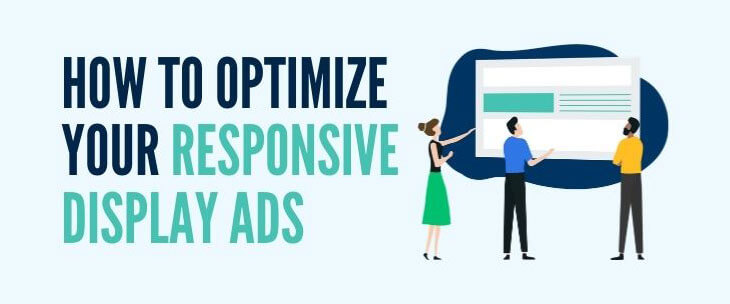Whether you’re an actor or a marketer, you can’t perform without an audience! Brands need to target a specific audience to sell their products and services. The third Thursday of every quarter is Get to Know Your Customers Day, so we wanted to share a few thoughts on finding your brand’s audience and connecting with it!
Targeting Audiences
Beyond attribution, the biggest advantage digital marketing has over its advertising peers in traditional media is definitely audience targeting. It’s similar to event marketing. An advertiser can qualify a group of people whose interest in a particular game or conference carries over to specific product placement. This makes placement of that particular product, at that particular event, more valuable to the brand. Think of Monster energy drinks at a Monster truck rally, or a snowsports apparel brand at the X games. They make sense for the time and place. The same can be done with digital marketing, but better!
Take social media. Commonly regarded as the best place to prospect cold audiences, advertisers have multiple opportunities to define who they want to see their ads. This is similar to an optometrist billboard that only appears to viewers in need of corrective eyewear. But until augmented reality advertising is invented, we have to rely on interests, behaviors, demographics, and location to determine viability in our campaigns. Naturally, there’s only so much you can do through correlative match-making, but it is a great place to start.
Next, we leverage standard lookalike audiences: groups of people sharing characteristics with those who previously bought or interacted with a brand. When it comes to Facebook and Instagram, this can be the proverbial black box. We can’t get full insights into how these audiences are paired, but through A/B testing and some deductive reasoning we can measure effectiveness.
For example, we upload buying behavior from the previous 180 days into Facebook to find individuals resembling these customers on the platform. This information can come from the client or through a marketing automation platform like Klaviyo. The more info on the list, the better. Facebook can use it to match users through Meta’s Audience Manager tool, which allows us to both upload audiences and create them. We can request anywhere from 1 to 10% of Facebook’s users who resemble these previous buyers, though the larger the number the bigger and less qualified the results.
Having a list of similar customers doesn’t mean guaranteed sales. At this point more refinement is needed to further sculpt the audience. Here’s how to begin the process for AB testing:
- Check out your current site analytics and collect data–Which pages are popular and which are not? Where do users abandon the marketing funnel? Consider these when creating ad copy.
- Choose a variable to test–Variables include messaging, value propositions, headlines, colors, fonts, pictures, and other elements. Stick to testing one variable to avoid confusion.
- Set a clear goal–For example, more clicks on your links, shared posts, increased impressions, and more conversions, whether through purchases, newsletter sign-ups, or form fills.
Delving into Demographics
We recommend taking a deep dive into audience segmentation to understand who your potential buyers are. This can inspire your ad creative (more on that later) to motivate those groups into your desired call to action. For example, a portable blender company may find that their audience is defined by two large groups that are very different from one another and should be addressed accordingly. The first group is 65% male/35% female, ages 25 through 34/single; whereas the second group is 70% female/30% male, age 25 through 45, married. In this instance, our team might curtail ad deliverables with young adults on a boat for the first group, with the second group receiving more health-focused or baby food-centric ads.
It’s important to identify what motivates different groups in order to leverage demographics. Often the biggest problem is clients don’t know who their audience is beyond the list of accounts following them on social media. Look at customer demographics–age, gender, marital and/or parental status, and income–and how these are affected by or reflect the product or service. When scouring your audience data, don’t neglect emails, testimonials, reviews, and social media posts and comments, as they further validate audience sentiment, which is another key component to determine buying behavior.
Creative Solutions
Speaking of ads, they can help you further refine your audience. As a first step, determine if you’re more interested in lead generation or e-commerce. Lead gen means bringing users to your site and converting them into customers through onsite actions (e.g., a form fill, survey, or phone call). E-commerce, on the other hand, involves offering a catalog of products and services.
For example, with e-commerce, ensure the info in your data feed is up to date with new products and inventory availability. You can’t be surprised by a lack of sales for a product that isn’t there. Prepare a number of static and dynamic ads on Facebook—using both ad types provides greater variety and a better chance to win auctions and reach your audience. These ads pull from your shopping feed and generate headlines according to a user’s search. A/B testing can refine your audience preferences and inform your deliverables. This involves splitting an audience into two or more groups and showing them similar but different versions of the same ad. Say, one with a male voice and another one with a female voice. Or the same ad with varying copy, to see which headlines resonate best with your audience. Remember, if you’re not A/B testing, you’re just making educated guesses, and that’s not the best way to determine your strategy. From there, compare and contrast the aggregated data of the reactions for each ad—number of impressions, conversions, or new visitors, for instance—to see which creative sparked the best results.
Warm and Cold
As you run ads you’ll learn more about what motivates your audience and can shape your creative and copy in response. A big part of the process is separating out the audiences. LP has three funnel positions. We take a different approach for each when creating our ad campaigns:
- Prospecting—Used for very “cold” audiences—ones unfamiliar with the company, its products, or services. Prospecting a cold audience requires slightly longer and more explanatory ad copy to bring the user up to speed.
- Remarketing/Mid-Funnel—Remarketing is reaching out to audiences who engaged with a brand either by visiting the website, clicking on an ad, or leaving an item in their basket. They may not have bought the product, but they can recognize the brand. Mid-funnel users may have liked your ad, commented on it, or engaged with your social media presence in some way. Using friendly language, ad copy should remind both about the product’s benefits and encourage them to return and purchase it.
- Lifetime value (LTV)—Customers who previously made a purchase, or purchases, who are retargeted to convince them to come back and buy more. Copy can have a familiar tone, reminding them of their previous business and encouraging them to return.
Capturing Your Audience
Targeting and connecting with the right audience is the key to survival. Find the folks who want your products and services and build the trust and familiarity that sustains your relationship. A brand needs an audience; without one, you’re just performing to an empty theater! If you need help finding your customers, contact Logical Position!




